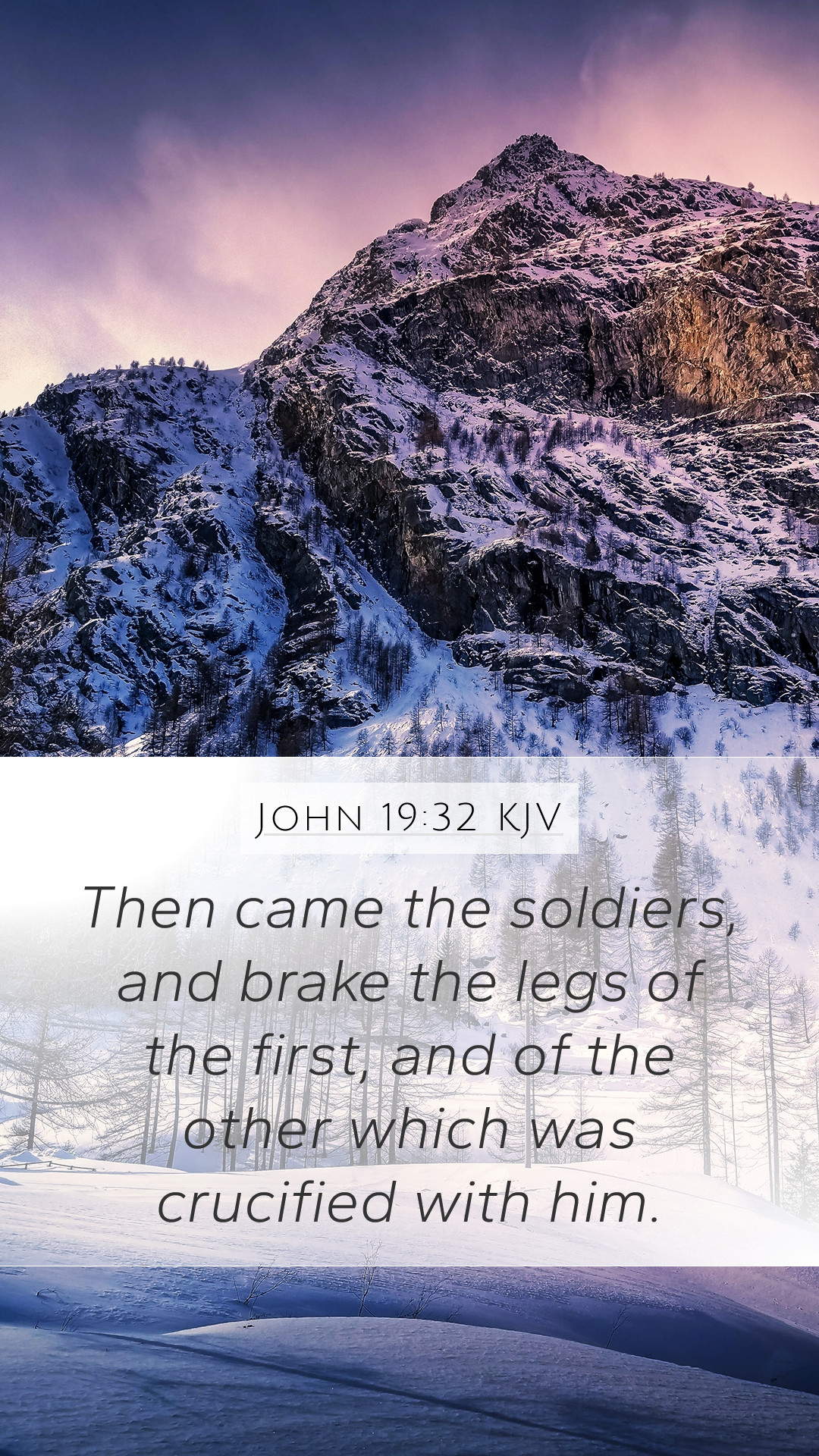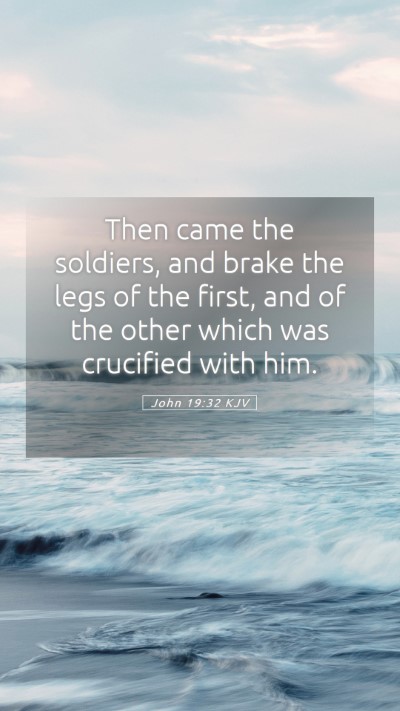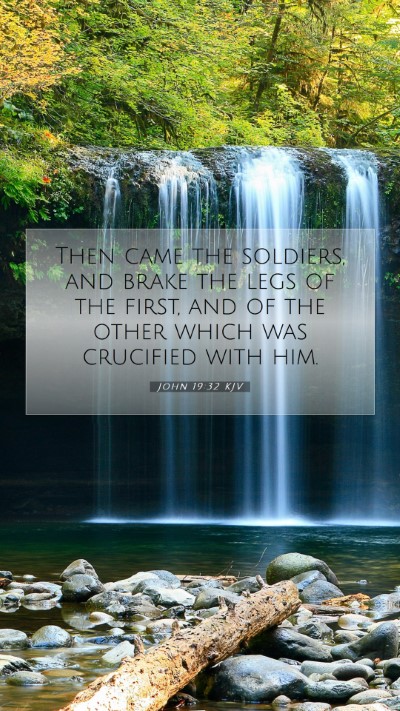Understanding John 19:32: A Comprehensive Analysis
In John 19:32, the text reads: "Then came the soldiers, and brake the legs of the first, and of the other which was crucified with him." This verse occurs during the crucifixion of Jesus, and it carries profound implications regarding the fulfillment of prophecy and the nature of the crucifixion.
Contextual Background
To properly comprehend this verse, it is essential to consider the historical and cultural context of the event. Jesus is portrayed as the sacrificial lamb, and His crucifixion takes place during the Passover, a time when lambs were traditionally slaughtered.
Bible Verse Meanings
This verse serves as a striking reminder of the brutal reality of crucifixion. By breaking the legs of the victims, the soldiers hastened their death, ensuring that they would not linger and thus violate the Sabbath, which would begin at sunset.
Insights from Public Domain Commentaries
-
Matthew Henry:
Matthew Henry notes that this act of breaking the legs ensures the swift demise of the crucified, effectively showcasing the cruelty of Roman execution methods. Furthermore, he emphasizes the prophecy fulfilled that not one of Jesus' bones would be broken, illustrating how the soldiers unwittingly contributed to the divine plan.
-
Albert Barnes:
Albert Barnes provides an explanation that reflects on the practical aspects of the crucifixion. He suggests that breaking the legs prevented the condemned from pushing themselves up to breathe, thus amplifying the suffering they endured. Barnes also discusses the significance of the timing of these events in relation to the Jewish customs surrounding the Passover.
-
Adam Clarke:
Adam Clarke elaborates further on the implications of this brutal act, indicating that it serves as a metaphorical indication of the finality of sacrifices in the Old Testament, culminating in the ultimate sacrifice of Christ. He emphasizes the juxtaposition of the brutality of the act with the divine purpose it served.
Significance of John 19:32
This verse illustrates several key themes in the Bible, particularly the fulfillment of prophecies concerning the Messiah. It demonstrates how the actions of individuals can align with God's overall plan, even if those individuals are entirely unaware of their role in that plan.
Biblical Exegesis
The breaking of the legs is not merely a historical account but resonates with deeper meanings, including themes of violence, sacrifice, and the paradox of human actions vs. divine sovereignty. As noted in the Gospel of John, Jesus is the sacrificial lamb whose death brings forth salvation, aligning with the Old Testament prophecies that speak of the coming Messiah whose bones would remain unbroken (Exodus 12:46; Psalm 34:20).
Applying the Verse to Daily Life
For contemporary readers, John 19:32 serves as a call to reflect on the complex nature of suffering and sacrifice. It challenges believers to consider the idea of enduring hardship with faith, drawing parallels with Christ's own suffering for the sake of humanity.
Related Bible Cross References
- Exodus 12:46: "In one house shall it be eaten; thou shalt not carry forth aught of the flesh abroad out of the house; neither shall ye break a bone thereof."
- Psalm 34:20: "He keepeth all his bones: not one of them is broken."
- John 19:36: "For these things were done, that the scripture should be fulfilled, A bone of him shall not be broken."
Conclusion
In conclusion, the analysis of John 19:32 through various scholarly resources enriches our understanding of not only this specific verse but also of the broader themes present in Scripture regarding sacrifice, prophecy, and the sovereignty of God's plan. For those engaged in bible study activities, these insights can deepen one's bible verse understanding and provide bible study insights that are essential for meaningful online bible study and group discussions.


